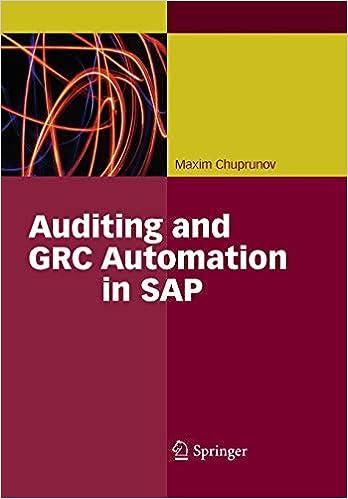Question
The distribution center team reported that 90% of the workers processed cartons in and out of the facility. The remaining 10% of workers were assigned
The distribution center team reported that 90% of the workers processed cartons in and out of the facility. The remaining 10% of workers were assigned to the desktop delivery service. All of the other warehouse expenses (rent, building and equipment depreciation, utilities, insurance, and property taxes) were associated with the receipt, storage, and handling of cartons. The delivery trucks were used only for desktop delivery orders. These estimates were reviewed by supervisors and felt to be representative of operations not just in the current year, but in the past year (2000) as well. The data entry team, from monitoring computer records, learned that operators worked 10,000 hours during year 2000. Further analysis of the records revealed the following distribution of time for each of the activities performed by data entry operators. (Questions are at the bottom, thank you)
| Activity | Data Entry Operators Time |
| Set up a manual customer order | 2,000 hours |
| Enter individual order lines in an order | 7,500 hours |
| Validate an EDI/internet order | 500 hours |
| Total | 10,000 hours |
Exhibit 1 Dakota Office Products: Income Statement CY2000
| Particulars | Amount $ | Markups % |
| Sales | 42,500,000 | 121.4 |
| Cost of Items Purchased | 35,000,000 | 100.0 |
| Gross Margin | 7,500,000 | 21.4 |
| Warehouse Personnel Expense | 2,4000,000 | 6.9 |
| Warehouse Expenses (excluding personnel) | 2,000,000 | 5.7 |
| Freight | 450,000 | 1.3 |
| Delivery Truck Expenses | 200,000 | 0.6 |
| Order Entry Expenses | 800,000 | 2.3 |
| General and Selling Expenses | 2,000,000 | 5.7 |
| Interest Expense | 120,000 | 0.3 |
| Net Income Before Taxes | (470,000) | -1.3 |
Exhibit 2 Customer Profitability Report (Current Method)
| Customer A | Customer B | |||
| Particulars | Amount $ | Markups % | Amount $ | Markups % |
| Sales | 103,000 | 121.2 | 104,00 | 122.4 |
| Cost of Items Purchased | 85,000 | 100.0 | 85,000 | 100.0 |
| Gross Margin | 18,000 | 21.2 | 19,000 | 22.4 |
| Warehousing, Distribution and Order Entry | 12,750 | 15.0 | 12,750 | 15.0 |
| Contribution to General and Selling Expenses, and Profit | 5,250 | 6.2 | 6,250 | 7.4 |
Exhibit 3 Services Provided in Year 2000 to Customers A and B
| Particulars | Customer A | Customer B |
| # of Cartons Ordered | 200 | 200 |
| # of Cartons Shipped Commercial Freight | 200 | 150 |
| # of Desktop Deliveries | None | 25 |
| # of Orders, Manual | 6 | 100 |
| # of Line Items, Manual | 60 | 180 |
| # of EDI Orders | 6 | None |
| Average Accounts Receivable | $9,000 | $30,000 |
A. Develop an activity-based cost system for Dakota Office Products (DOP) based on Year 2000 data. Calculate the activity cost-driver rate for each DOP activity in 2000.
B. Using your answer to Question A, calculate the profitability of Customer A and Customer B.
Step by Step Solution
There are 3 Steps involved in it
Step: 1

Get Instant Access to Expert-Tailored Solutions
See step-by-step solutions with expert insights and AI powered tools for academic success
Step: 2

Step: 3

Ace Your Homework with AI
Get the answers you need in no time with our AI-driven, step-by-step assistance
Get Started


